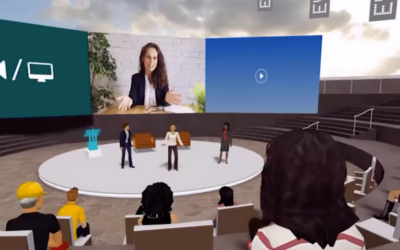Virtual events have been growing in popularity, but the COVID pandemic has really created an environment where they fill an important role – keeping participants safe. Of course, that is only one benefit of virtual events. Others include the ability to reach a wider audience, reduce travel expenses, and lower overall event costs.
The necessity of online events has forced technology to become more accessible but has also crowded the space with events happening daily. This popularity means your events must now find a way to cut through the noise to get participant attention and action.
Here are 5 tips to promote your virtual event to have it stand out:
Know your participant’s goals
For most online events, the goal is to get people to participate in the event and engage with the call to action the event was designed for. Once you know your participants’ goal(s), determine how to promote the event in a way that drives the achievement of that goal. Create a platform that offers testimonials, steps, and inspiration towards obtaining desired results and encourages engagement.
Plan your marketing strategy for building up to the event, to remind participants of the offers during the event, and in post-event follow-up. Continually remind participants of what’s in it for them.
Set Clear Participant Expectations
Be sure potential participants know what to expect from the event. It needs to be of high value in their eyes because unlike a physical event where they invest time and money to sit in a chair, they need details that will get them to engage.
Explain how panels, Q&As, or breakout sessions will work so they know how to interact. Share schedules ahead of time so they understand what they will be getting out of the event, and/or individual sessions.
Participants will feel more satisfied after the event if their expectations are met, so be clear and specific in order to create that for them. Remind the attendees why they signed up and what they will get from the event and do it early and often – then deliver on that.
Promote the event heavily
Use anyone and everyone involved in the event to help promote it. Word of mouth is important here, so make all links and promotional information easy to share. Consider discounts or contests for participants who share the event and increase registration.
Create marketing collateral for speakers, hosts, and even attendees it’s a no-brainer to invite others. Consider your power partners who may want to attend the event and promote it to their customers as well.
Use your event hosts, speakers, and industry influencers to attract participants and help promote the event far and wide.
Virtual events are more successful when cross-promoted, so using strategies that allow for that is ideal. Co-branding, affiliate partnerships, and influencer sharing will help your event have the attendance that will make it successful.
Think bigger
Use segmented lists to speak differently to those attending with different desired outcomes. For example, an event for the writing and publishing industry may attract attendees interested in learning about the craft of writing and others how to get published. These would-be writers.
However, publishing companies may also attend, looking for the next great writer. Editors may attend looking for clients. How you market to each will be different and each segment can be leveraged for different goals while also increasing participation.
Track results
Too often event promoters are busy with details and forget to track how they attracted participants in the first place. If you want to follow up, and/or want to repeat the same or similar event in the future, knowing what worked and what didn’t work will save you time and money.
Set up your events ahead of time to track information – you can review it after the event during debriefing. It will be working the time spent being proactive from the start.
If you are looking for support in creating and managing a virtual event, learn more about how AMI can help, here.



